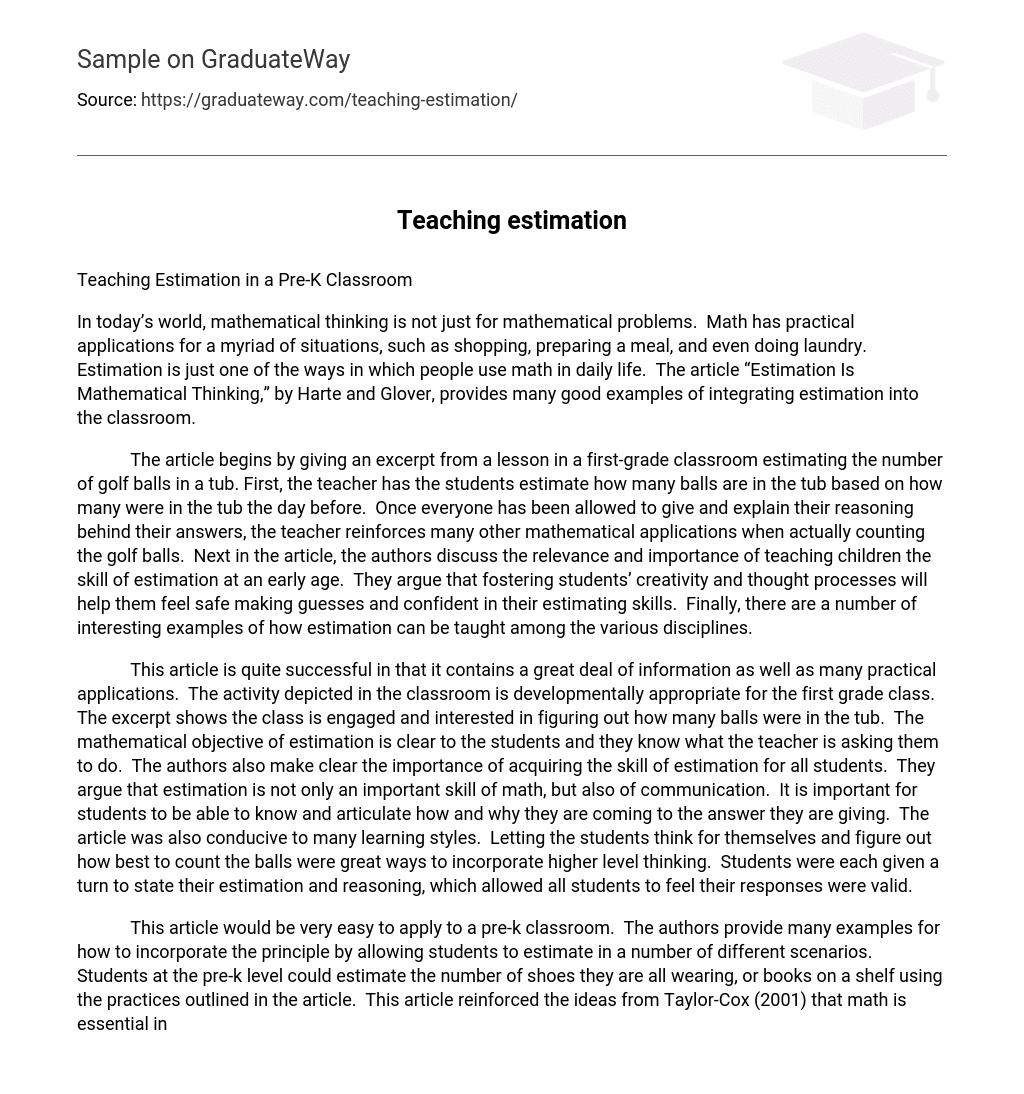Teaching Estimation in a Pre-K Classroom
In today’s world, mathematical thinking is not just for mathematical problems. Math has practical applications for a myriad of situations, such as shopping, preparing a meal, and even doing laundry. Estimation is just one of the ways in which people use math in daily life. The article “Estimation Is Mathematical Thinking,” by Harte and Glover, provides many good examples of integrating estimation into the classroom.
The article begins by giving an excerpt from a lesson in a first-grade classroom estimating the number of golf balls in a tub. First, the teacher has the students estimate how many balls are in the tub based on how many were in the tub the day before. Once everyone has been allowed to give and explain their reasoning behind their answers, the teacher reinforces many other mathematical applications when actually counting the golf balls. Next in the article, the authors discuss the relevance and importance of teaching children the skill of estimation at an early age. They argue that fostering students’ creativity and thought processes will help them feel safe making guesses and confident in their estimating skills. Finally, there are a number of interesting examples of how estimation can be taught among the various disciplines.
This article is quite successful in that it contains a great deal of information as well as many practical applications. The activity depicted in the classroom is developmentally appropriate for the first grade class. The excerpt shows the class is engaged and interested in figuring out how many balls were in the tub. The mathematical objective of estimation is clear to the students and they know what the teacher is asking them to do. The authors also make clear the importance of acquiring the skill of estimation for all students. They argue that estimation is not only an important skill of math, but also of communication. It is important for students to be able to know and articulate how and why they are coming to the answer they are giving. The article was also conducive to many learning styles. Letting the students think for themselves and figure out how best to count the balls were great ways to incorporate higher level thinking. Students were each given a turn to state their estimation and reasoning, which allowed all students to feel their responses were valid.
This article would be very easy to apply to a pre-k classroom. The authors provide many examples for how to incorporate the principle by allowing students to estimate in a number of different scenarios. Students at the pre-k level could estimate the number of shoes they are all wearing, or books on a shelf using the practices outlined in the article. This article reinforced the ideas from Taylor-Cox (2001) that math is essential in many areas of life, not just inside a math classroom, and that just guessing how many marbles are in a jar is not enough. Students need to be taught to have a general sense of everyday items, so they have a basis for estimating. Then they need to be able to explain why they have decided on the answer they are giving. Teaching estimation is more than just guessing; it is about thinking. Having good estimating skills also translates into having good thinking and communicating skills, and those skills cannot be stressed enough, especially at a pre-k level.
Harte and Glover wrote a significant article about the importance of estimation, as well as how important the right approach to teaching it can affect many areas of a student’s growth. Providing sound research and giving a number of practical applications ensured that readers would agree with their position of how important estimating is, and take away some activities that they could try in their own classrooms very soon. As is true of much of early education, one activity can be a lesson on many areas and levels of thinking, and this article pointed that out in a succinct and useful way.
References
Taylor-Cox, J. (2001). “How many marbles in the jar? Estimation in the early grades.”
Teaching Children Mathematics, 8, 208-214.





